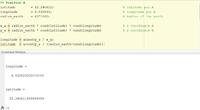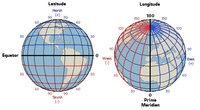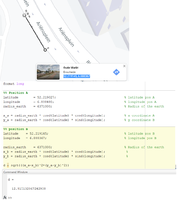Hello. I am trying to convert an longitude and latitude (GPS coordinate) to x, y. And back from x, y to longitude and latitude.
The formulas:
x = R * cos(lat) * cos(lon)
y = R * cos(lat) * sin(lon)
R = radius of the earth = 6317000 meter
As far as i could come:

In the last formula i would like to calculate lon. In this case i know the y and x axis. So lon is the only unknown factor.
But how to get the lon value out of this formula?
All help would be really appreciated
The formulas:
x = R * cos(lat) * cos(lon)
y = R * cos(lat) * sin(lon)
R = radius of the earth = 6317000 meter
As far as i could come:

In the last formula i would like to calculate lon. In this case i know the y and x axis. So lon is the only unknown factor.
But how to get the lon value out of this formula?
All help would be really appreciated







